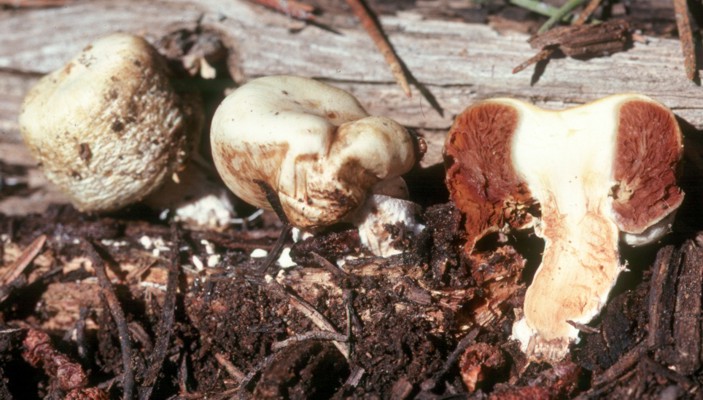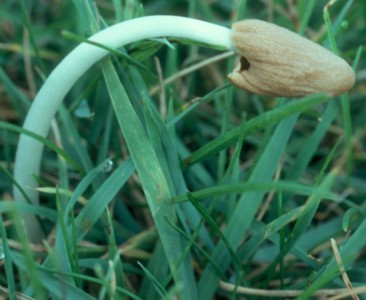Home >> Diversity and classification >> True fungi >> Dikarya >> Basidiomycota >> Agaricomycotina >> Gasteromycetes >> False truffles
FALSE TRUFFLES

False truffles are not real truffles because they are members of the Basidiomycota not the Ascomycota. Otherwise the similarities are greater than the differences. The false truffles all lack the ability to shoot their basidiospores away from the basidium and allow them to mature inside the subterranean basidiomata. The fruiting bodies often have an odour attractive to specialized rodents that seek them out as a source of nutrition. When the animal finds one it eats it and the basidiospores pass through its gut unharmed and ready to germinate.
It has been suspected for many years that the false truffles have descended from ancestors with forcible basidiospore discharge. More recent molecular studies have supported this idea. Not only do they have more "conventional" ancestors they seem to have descended from a variety of rather unrelated ones. For example, the picture above illustrates four species of false truffles, left to right, a species of Rhizopogon, Gautieria graveolens, Gymnomyces brunnescens, and a species of Hysterangium. These fungi belong to the orders Boletales, Gomphales, Russulales and Hysterangiales respectively, all members of the class Agaricomycetes but otherwise not closely related. It seems that members of all these orders of Basidiomycota can find themselves under similar enviroonmental pressures rewarding those who go underground. These fungi, including all of those in the pictures, are particularly abundant in the mountains of the American Pacific Northwest.

Pholiota rubigena, the fungus at right, appears to be on its way to becoming a false truffle. This species is common in the mountains of western North America where it fruits near snow banks. It is known to belong to the genus Pholiota, but differs from other members of this group in having basidiomata that never open and discharge their basidiospores. There are many species of these "sequestrate agarics" known and these have been placed in their own genera. However, recent genetic work indicates that these fungi are so closely related to the "normal" ones that a separate genus is not really necessary. It is likely that over the next few years many of these genera will be discarded and the species they contained transferred into the more familiar mushroom groups. Before these relationships became clearer Pholiota rubigena was placed in the genus Nivatogaster.

The fungus at left, Gastrocybe lateritia, is a very common species found on lawns in mid-continental Canada and United States during the muggiest days of summer and is another example of "sequestrate agaric". This species comes up in the early morning looking like a basidioma of a species of Conocybe, particularly C. lactea. However it soon begins to bend over and finally just sinks back to the ground as the one in the picture is doing. Its basidia do not have the ability to shoot their basidiospores away as do those of Conocybe species. It is unknown how this species is dispersed.